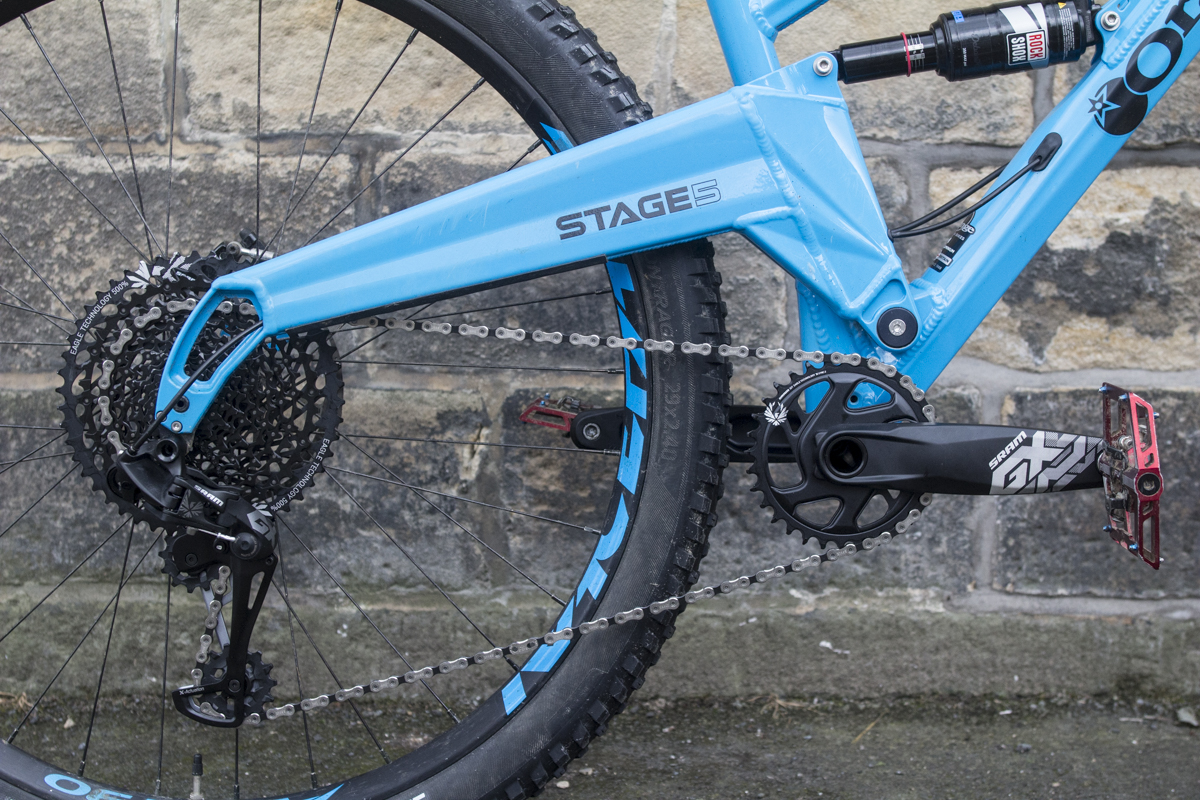Chipps gives a bit of a side by side comparison of SRAM’s XX1 Eagle and the new GX Eagle. For the full tech rundown, check out Wil’s feature on the new SRAM GX 1×12 Drivetrain.
I’ve been running SRAM’s 12 speed XX Eagle for much of the last year, as well as having raced it for seven hours at the recent Singletrack7 event in Catton Park, where it was brand new and mounted on a lovely blurple Specialized Epic hardtail.
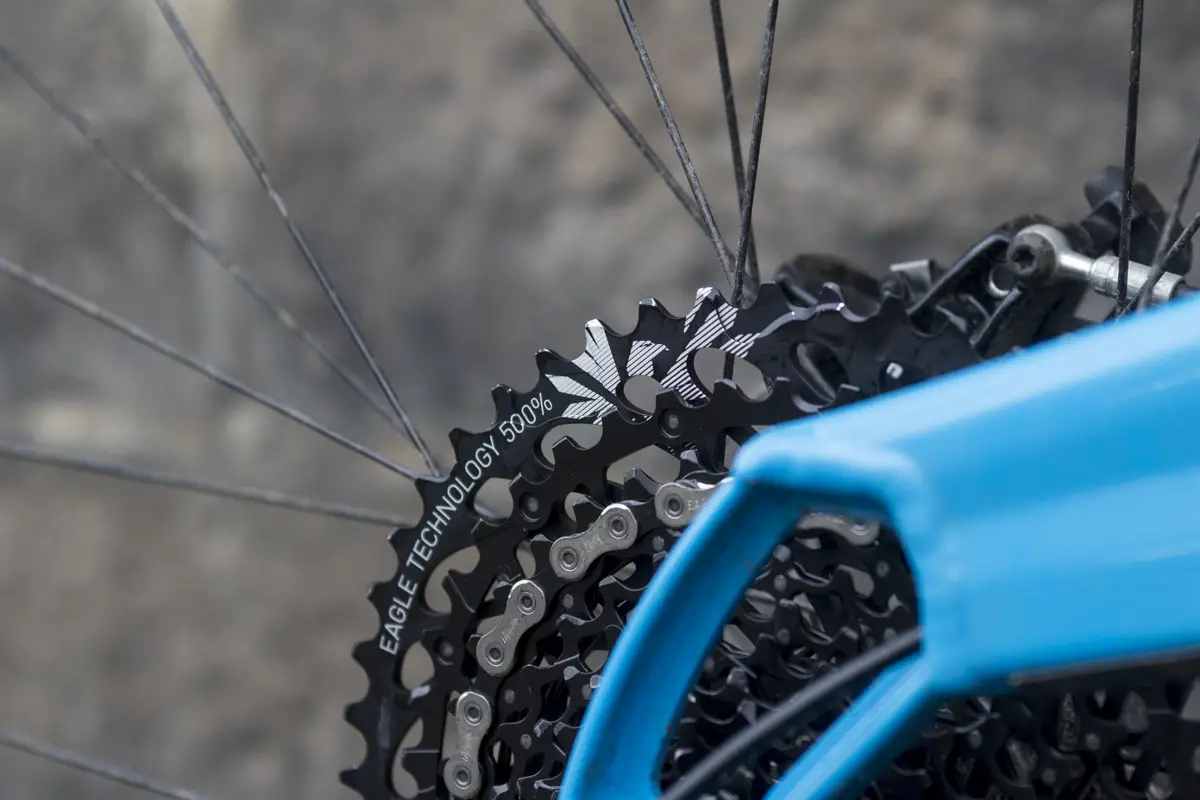
As I’ve said in my previous reviews of SRAM’s XX1 Eagle groupset, the performance – especially of that giant dinner plate, is very impressive. The price, however, puts it into the realms of the pro-rider, the absolute performance seeker and the well off enthusiast. I said that it wouldn’t be long before SRAM’s aggressive trickle-down culture brought the 12 speed groupset into the realms of the mortals.
And boy have they done that!
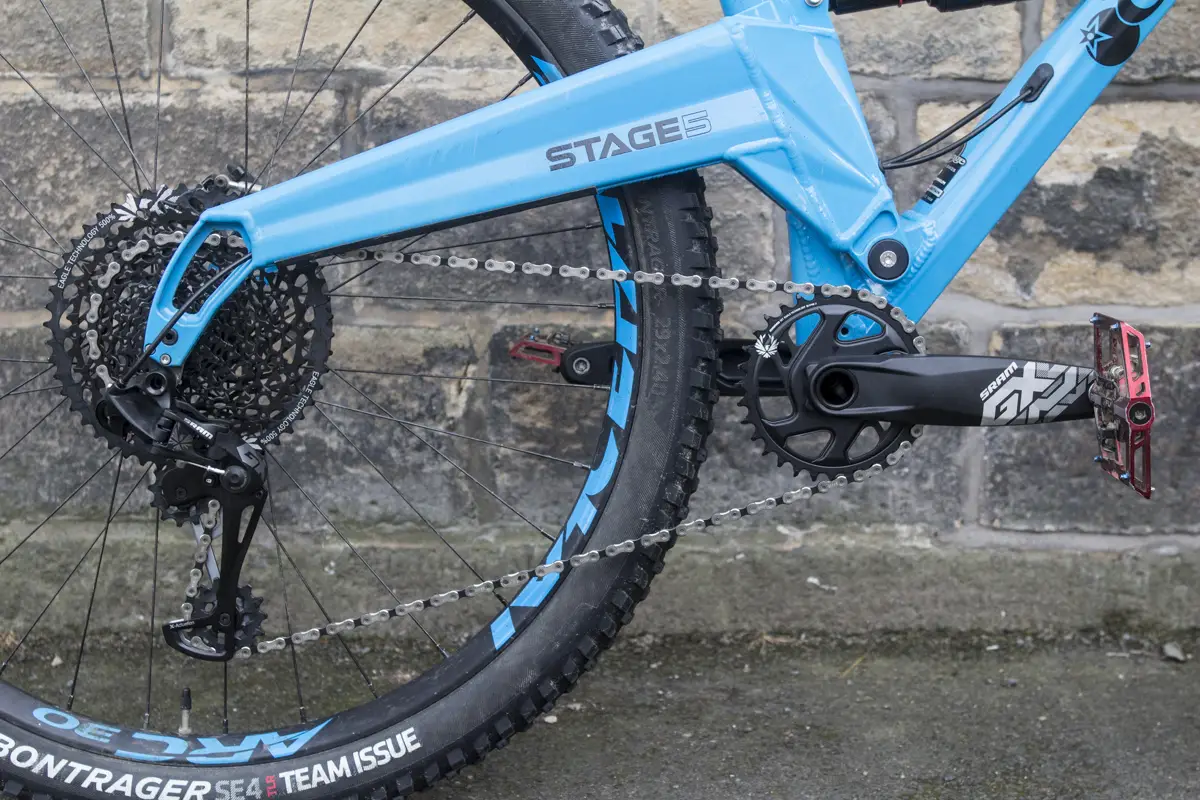
The new Eagle GX group skips over X1 and comes in at SRAM’s (XD driver-based) entry level. This has a big impact – in terms of riders being able to affordably upgrade to 12 speed and XX1 riders being able to replace cassettes without weeping at the cost. Most of all, though, it’s going to affect OEM bike spec. With GX, bike manufacturers are going to be able to offer mid-priced bikes with all singing, all dancing 12 speed groupsets – and Shimano, currently, seems to have nothing to answer that.
So, it’s going to be big, trust me. But is it any good?
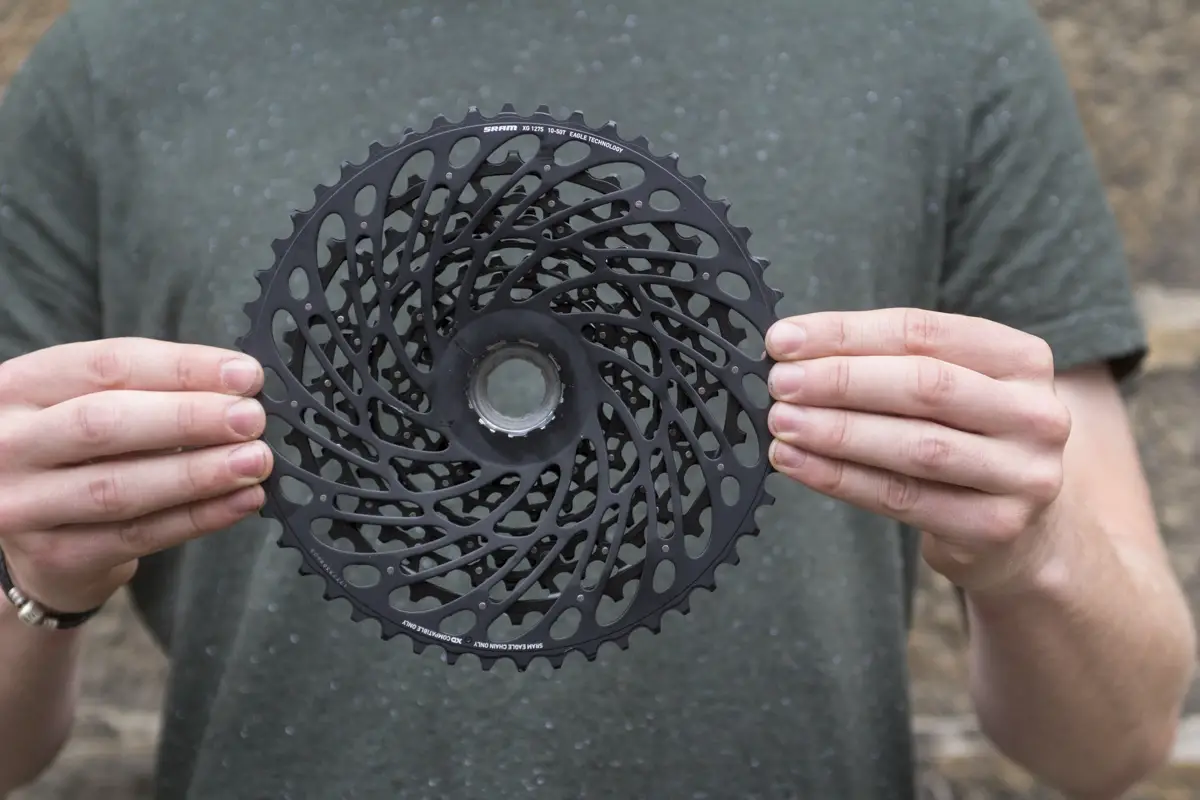
Given our short time with an early production groupset, I’d reckon so. There are a few subtle differences in ergonomics, but the main performances are comparable.
Before going any further, I’ll point out that I’m not going to go into all the nitty-gritty detail about all the bits of the new GX drivetrain. If you want to know prices, weights, and what kind of grain structure the alloy uses on the new crank arms, check out Wil’s in-depth feature on the SRAM GX 1×12 Drivetrain. Otherwise, lets get on with things and have a look into how it all goes together and what it’s like on the trail.
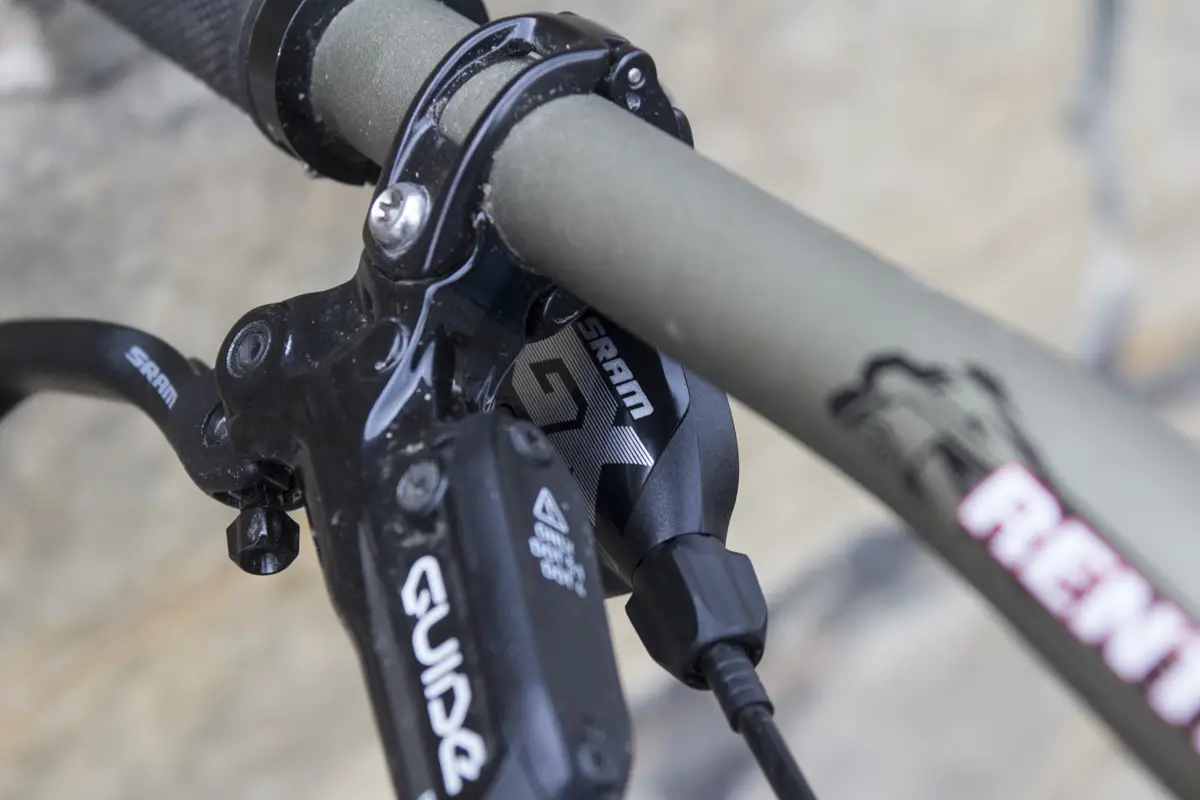
The Ride
Given it’s your touch-point to the drivetrain, the shifter is probably the most noticeable day-to-day difference between the groupsets. The GX shifter has a much more pronounced square edge on the thumb lever. Both are grippy-ish – with a flattish, slightly convex shape enhanced slightly by laser-etching. You’ll probably never notice it in gloves, but if you’re a bare hand rider, you’ll probably prefer the general feel of the XX1 lever.
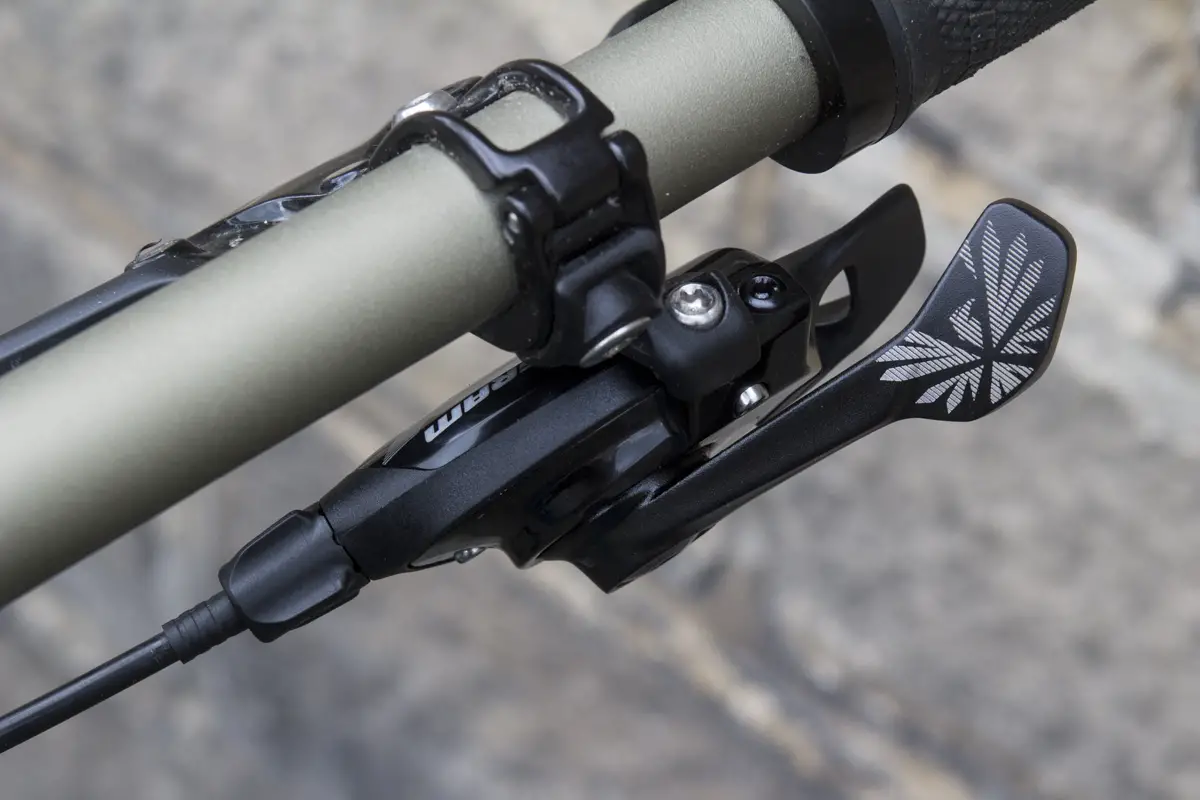
Importantly too, the XX thumb lever can be swivelled so that it sits where you want it, whereas the GX (like all the other SRAM groups to be fair) is a fixed lever position back to front. The side-to-side position can still be adjusted to one of two positions to get the levers closer, or further away from, your thumb.
The ‘click’ of the GX feels the same and the upshift lever feels identical in feel and function to XX1. During the test we had no problems apart from a quarter turn of the barrel adjuster here and there as the new cable bedded in.
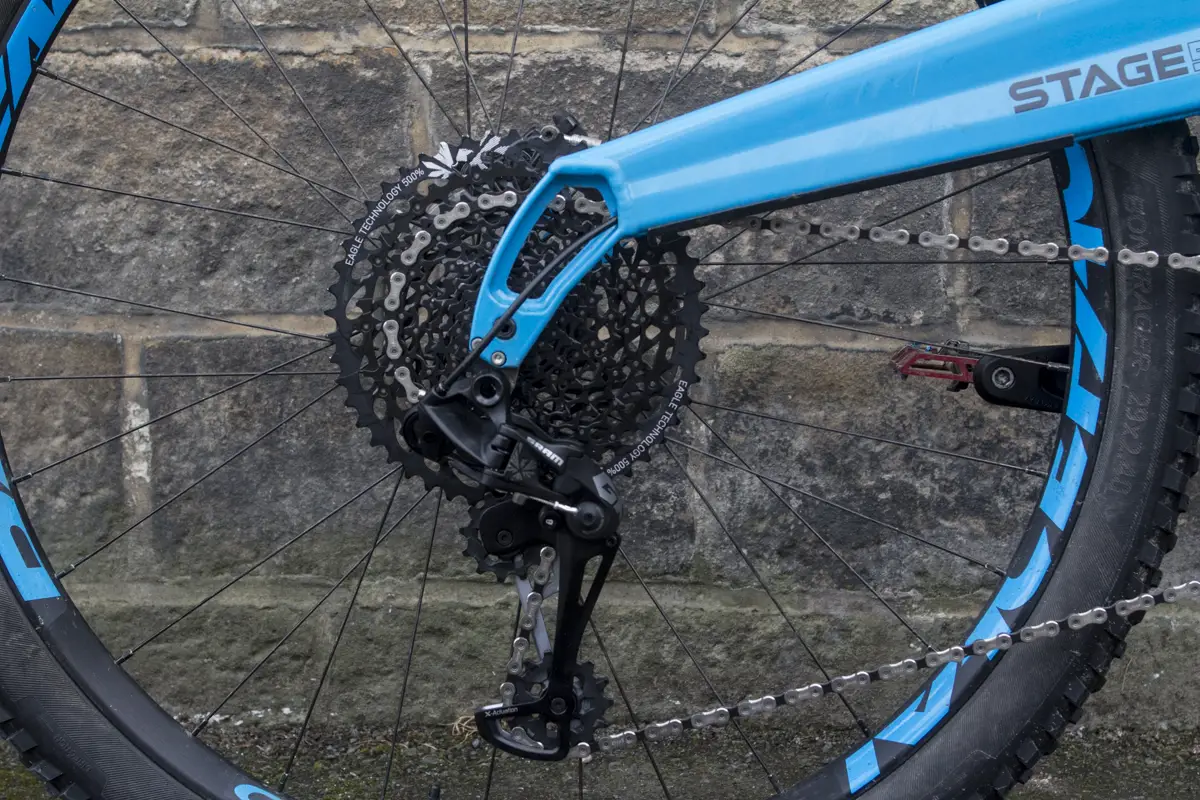
At the cassette end, the giant 10-50t cassette is an engineering marvel – possibly even more so than XX1’s two piece hollow structure. The 12 speed cassette is mostly pinned together, which does add weight, but it feels sturdy and just right for putting loads of pressure down. Whereas we always feel a little (unduly) careful around the XX1 cassette. We’ve also had incidences of the XX1 cassette creaking a little as it settles down on first use, but that seems to ease after that first ride, once everything has found its place. The GX meanwhile hasn’t given us any issue at all.
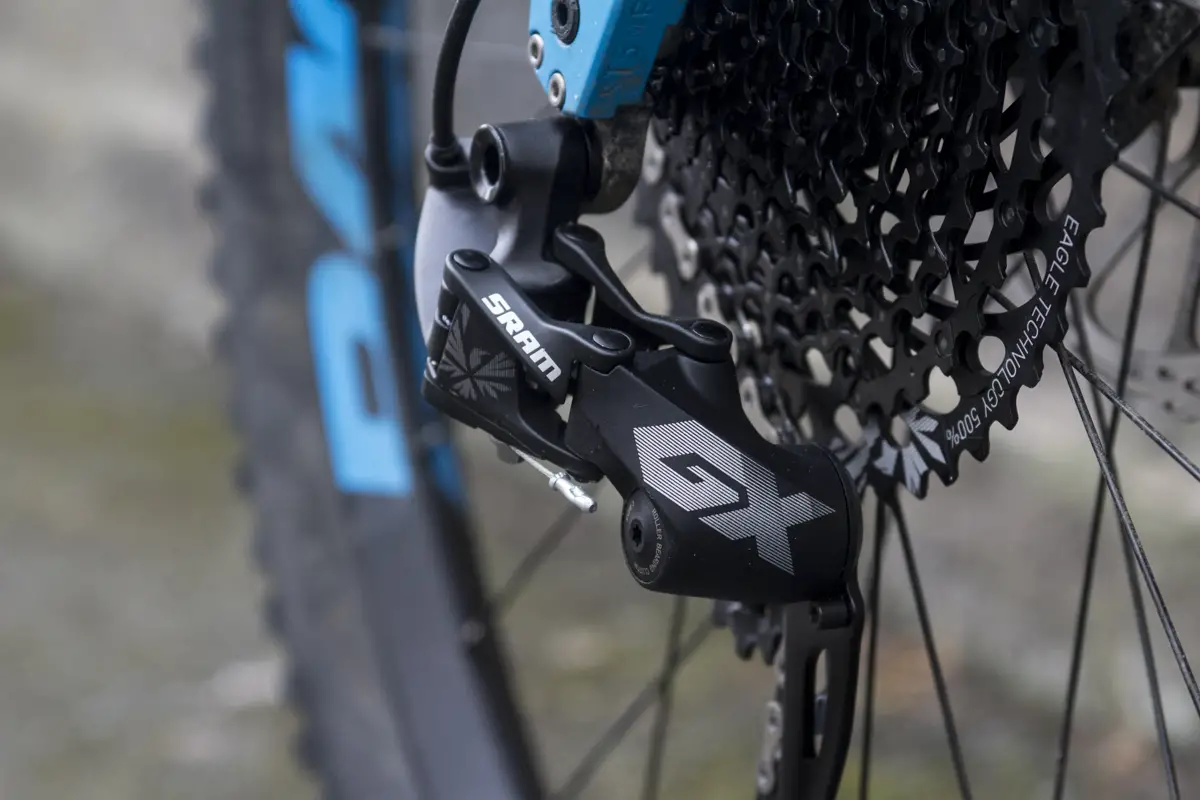
GX in fact has offered near silent shifting, especially at that low end, where shifting up to that 50 is hard to feel, let alone hear. Shifting out of it is equally slick. And while it’s nearly twice the cost of Shimano’s 11-46 cassettes, it does have that magic 10-50 gear ratio. It really will spoil you for other component groups.
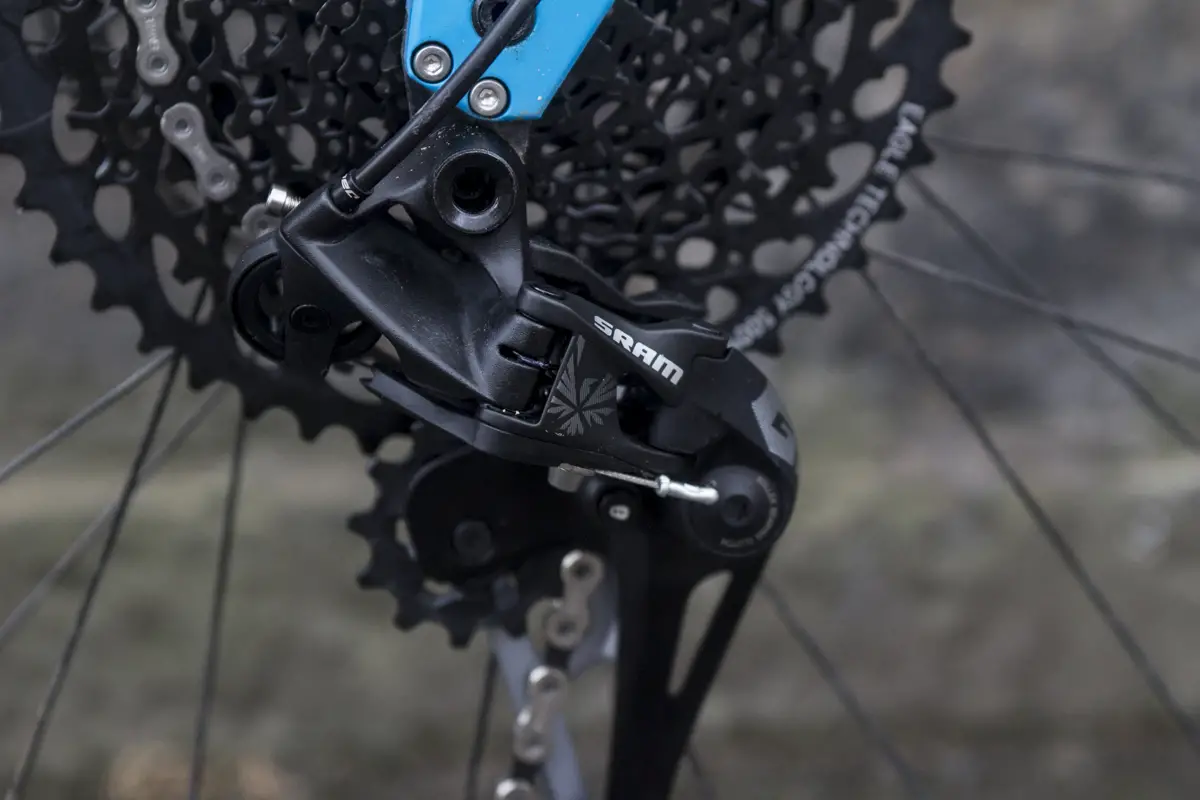
Functionally, the rear derailleur is also identical to the XX1 version. It uses the same offset upper pulley to increase overall range so the mech can wrap around that humoungo 50t sprocket, and it also has the excellent Cage Lock button that allows you to lock the cage in a forward position for rear wheel removal/installation. In use, I couldn’t tell the difference between the GX mech and its pricier family members. Sure, it doesn’t get the carbon jockey wheel cage or chunks of carbon fibre, but that doesn’t seem to affect shift quality. The only thing it affects is weight, which is the equivalent to a small packet of wotsits.
Although our derailleur is yet to be slammed into any rocks, given our previous experience with other SRAM 11-sped and 12-speed rear mechs and their ability to ward off scrapes and hits, I’ve got no doubts that the GX Eagle mech will be just as solid.
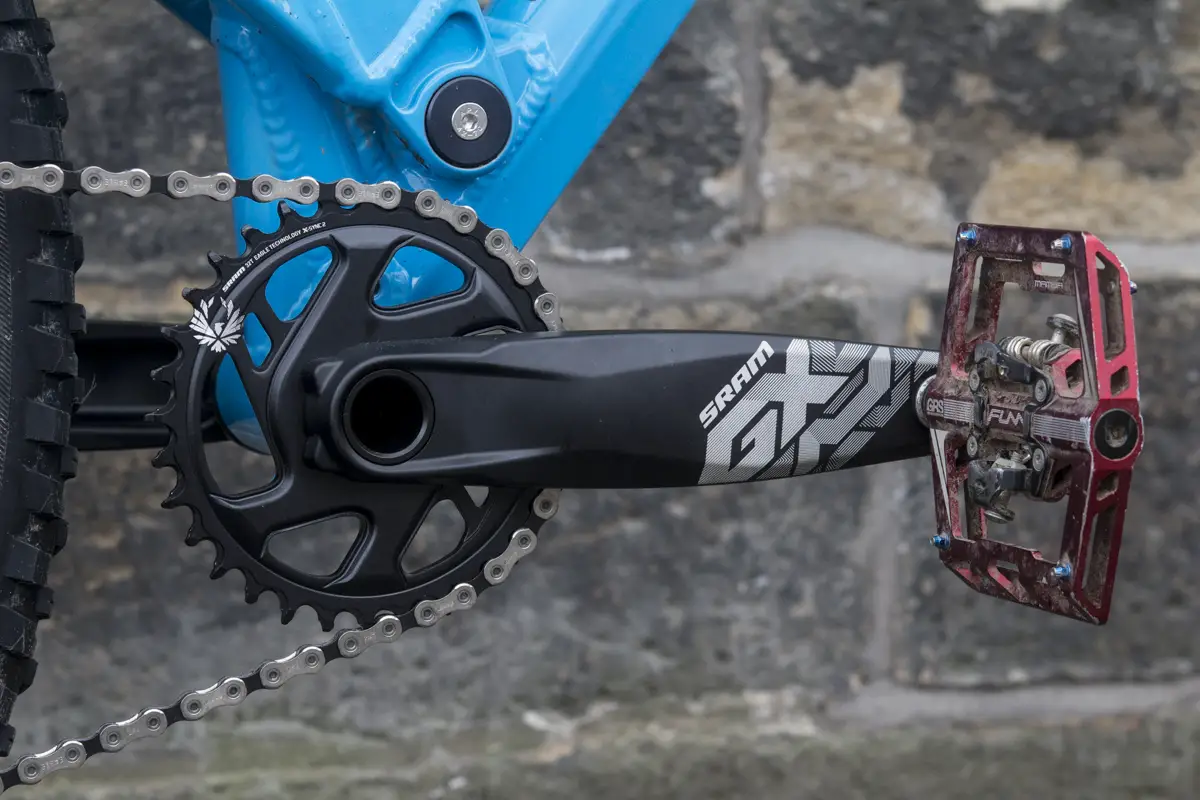
Similarly the GX cranks go about their business inconspicuously. The hefty-looking crank arms are a new design for SRAM, and are realised with a forged alloy construction. Not as trick as the lightweight XX1 carbon crank arms, but they go round and are plenty stiff. Plus, you won’t worry about scratching or gouging the arms when they inevitably make contact with a granite slab as you slide across it.
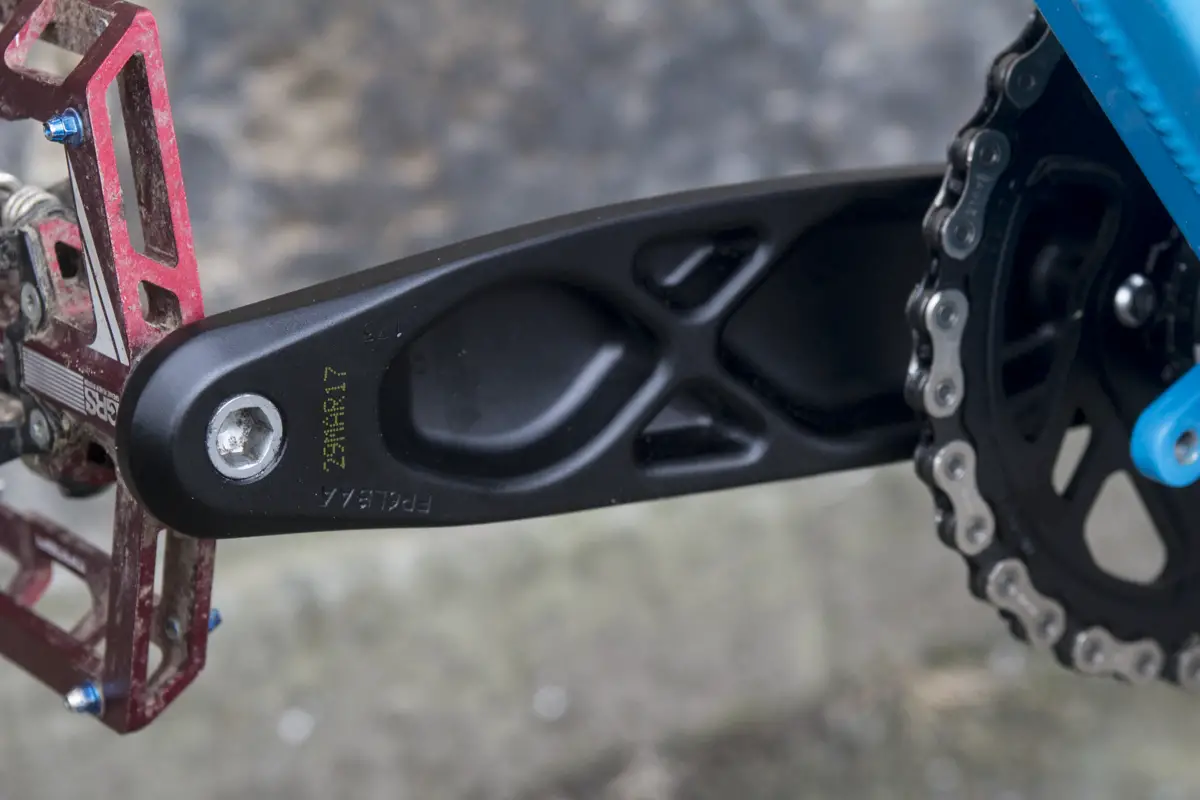
Because of the forged alloy construction, the GX cranks are where most of the weight difference is when compared to the XX1 Eagle groupset. On the spec sheet there’s 165 grams between the two, but then the XX1 cranks do cost about three times as much. So unless you’re keen on paying £1.52 per gram, the GX option represents most excellent value for money.
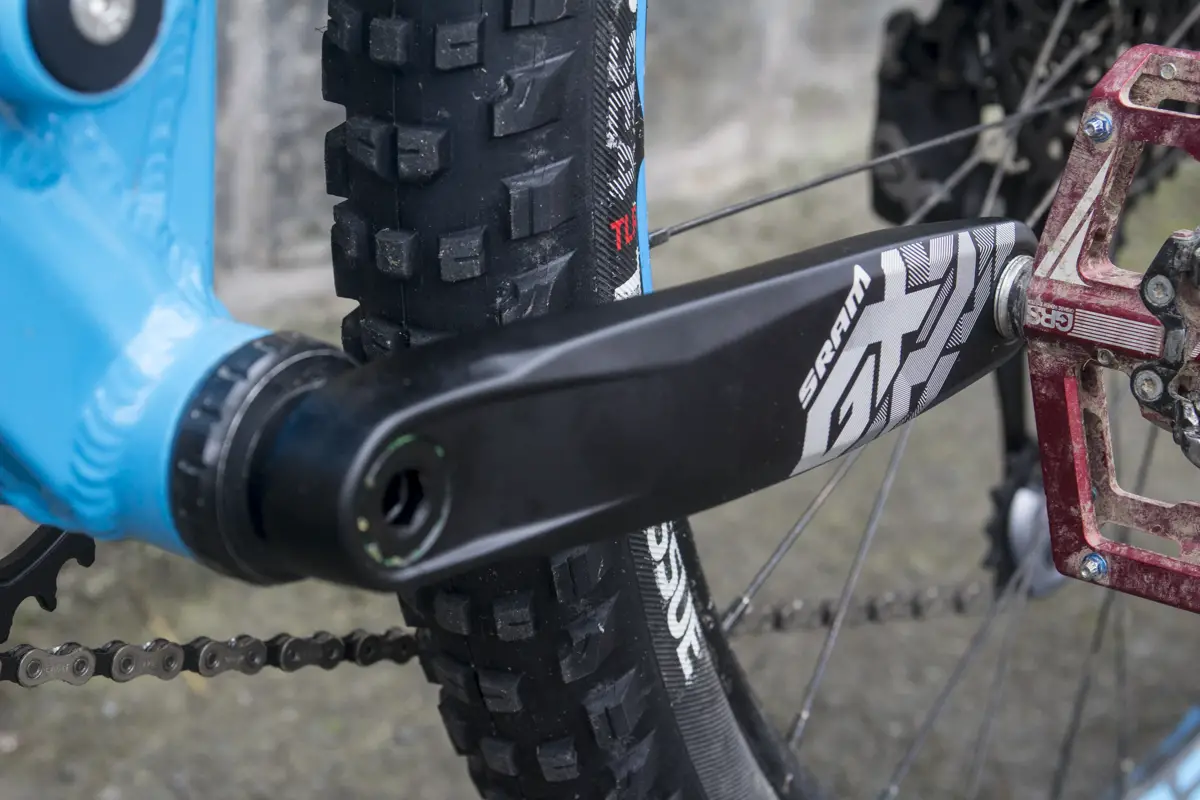
Our test bike was setup with the GXP version of the GX cranks, and paired to a matching GXP threaded bottom bracket. The GX cranks are also available with a 30mm diameter spindle for BB30/PF30 setups. Installation is easy and straightforward. Rather than the press-fit variety, the bottom bracket cups thread easily into the frame in our preferred method. A large 8mm hex key is all you’ll need to bolt the crank arms on, while the 10mm threaded cap on top of the main crank bolt means they self-extract too. And while it’s too early to make conclusions on longterm durability, the cranks have remained smooth and quiet so far and we have no reason to assume that this will change.
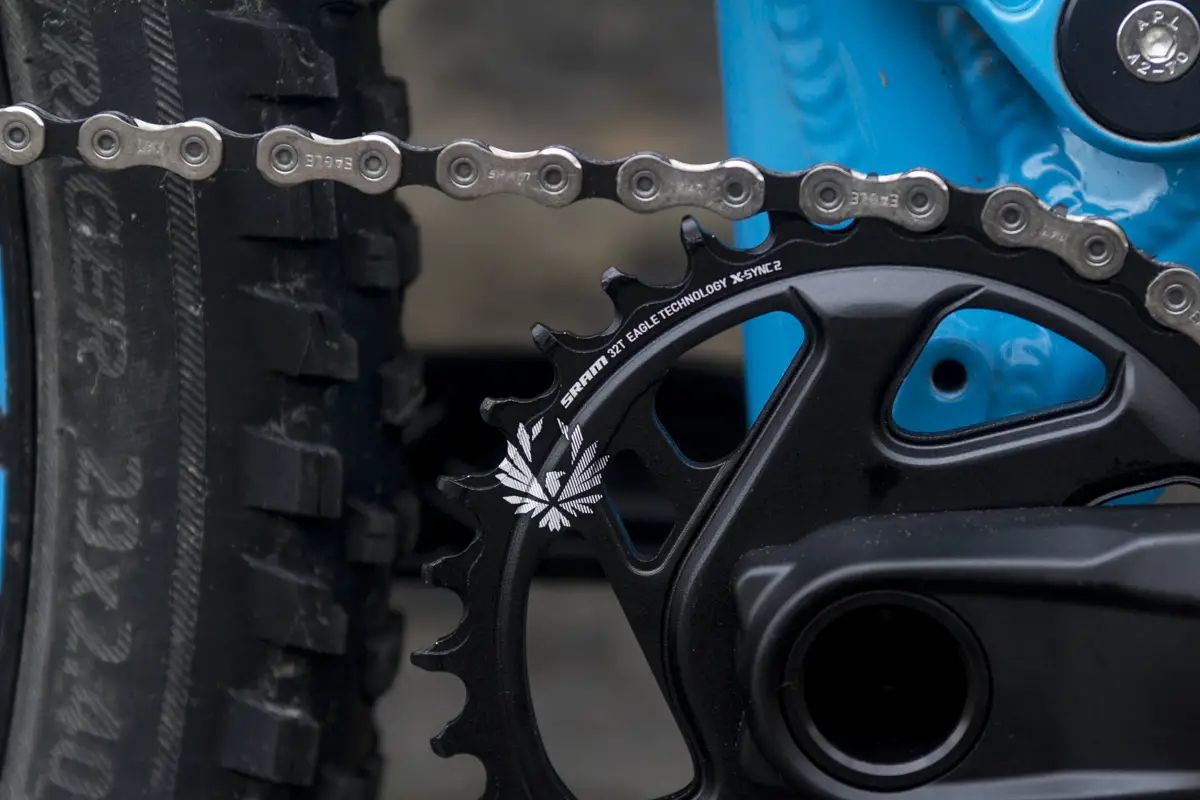
The GX cranks feature a direct-mount chainring that uses the same eagle-claw tooth profile of the XX1 Eagle chainring. The chainring is made from alloy, but gets a bit less machining and chiselling compared to the pricier chainring options. It uses the SRAM direct mount standard, with three stainless steel bolts attaching the chainring to the drive-side crank arm. You can tell where these bolts mount, because the outward face of the drive-side crank arm has two little lumps of alloy around the axle. A little clonky-looking, and not quite as lovely-as the carbon used on the XX1 crank arms, but hey, we’re splitting hairs eh?
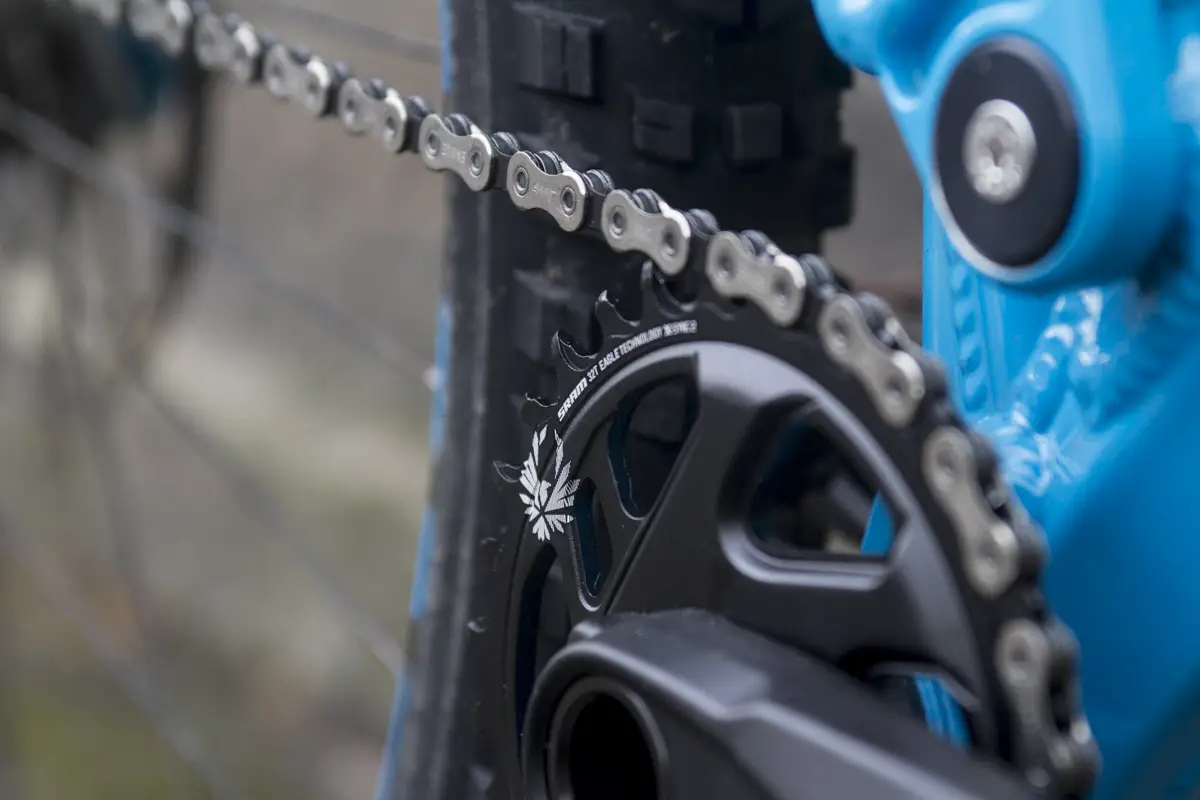
Most importantly, the Eagle chainring works. Much like the shifting out back, operation up front is quiet and well adept at keeping the chain in place, which is exactly what you want from a 1x chainring really. I’ve also been impressed by the longevity of the chainring on the XX1 longterm test groupset I’ve been riding for the past 12 months, and with a similar X-Sync 2 chainring design here, I’d expect the same durability out of the GX version.
Overall
The thing about the new GX Eagle drivetrain is that it just works. The shifting out back is smooth, and chain retention up front is impeccable. There are some differences in ergonomics between the GX shifter and SRAM’s more expensive options, but it’s the sort of you-wouldn’t-know-till-you-tried-it thing. The cassette is an incredible piece of engineering, and particularly when it comes in at nearly a third of the price of the XX1 cassette.
For riders currently looking to upgrade their existing SRAM 1×11 drivetrain, it would be very hard to justify spending any more money than on GX Eagle. With the cassette using the same XD driver body, it’s a relatively straight-forward upgrade that offers great value for money and a welcome boost in overall gear range. For riders already with a 1×12 drivetrain, GX Eagle offers consumable drivetrain parts that will help to lower service bills when it comes time to replacing the chain, cassette and chainring.
And for those who are looking at buying a whole new bike in the near future, expect to see a whole load of complete bike options with GX Eagle – this groupset is going to be everywhere.

